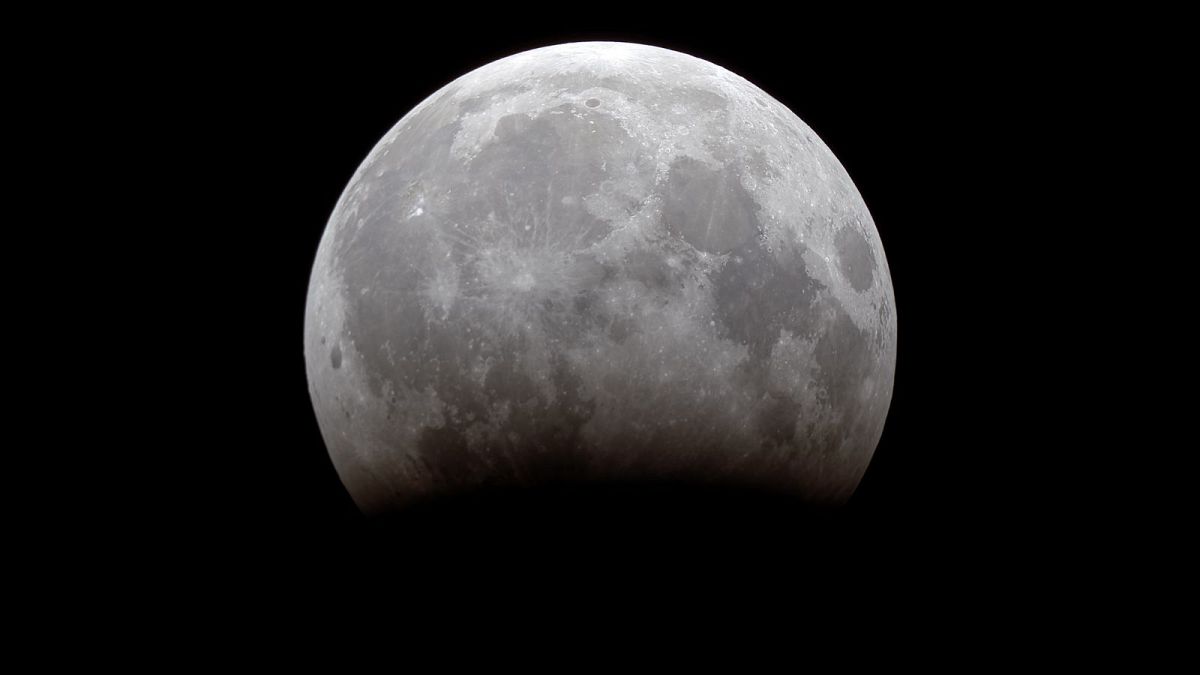The partial lunar eclipse will occur in the pre-dawn hours of Wednesday and will be visible in Europe. Here’s what you need to know.
The sky over Europe is set to showcase another notable cosmic event in the pre-dawn hours of Wednesday when a full Moon will bring together a partial lunar eclipse, a supermoon, and a harvest moon.
A lunar eclipse occurs only during the full Moon phase, when Earth passes directly between the Sun and the Moon, casting its shadow onto the lunar surface.
This upcoming eclipse will be partial, meaning only a portion of the Moon will pass through Earth’s shadow, which “grows and then recedes without ever entirely covering the Moon,” according to NASA.
This event is set to feature a lunar eclipse, a supermoon, and a harvest moon, all happening at the same time.
A supermoon happens when the Moon reaches its closest point to Earth in its orbit, causing it to appear larger and brighter than usual.
This supermoon coincides with the Harvest Moon, which is the full Moon nearest to the autumnal equinox, occurring on September 22 this year.
The name “Harvest Moon” comes from its traditional association with the autumn harvest, as it helps farmers work later into the night thanks to the bright moonlight.
In Europe, the Harvest Moon is also known by other names, such as the Fruit Moon, as many fruits ripen as the end of summer approaches, and the Barley Moon, referring to the harvesting of barley.
When can you watch the eclipse in Europe?
The eclipse will be visible in parts of North America, South America, Europe, and Africa, depending on weather conditions.
In Europe, the partial lunar eclipse will start at 2.41 AM CET on Wednesday when the Moon begins to move into Earth’s outer shadow.
At first, the dimming of the Moon will be very subtle and hard to notice.
As the Moon moves deeper into Earth’s shadow, the dimming will become more noticeable around 4.13 AM CET, when the upper edge of the Moon enters the darkest part of the shadow.
The eclipse will reach its peak at 4.44 AM CET, with only about 8 per cent of the Moon covered by the darkest shadow, called the umbra.
This is also when it will take on a reddish-brown colour, commonly referred to as the Blood Moon.
The Moon will then fully leave the dark shadow at 5.15 AM CET, and the lighter shadow at 6.47 AM CET, marking the complete end of the eclipse.
The entire event will last four hours and six minutes, while the more dramatic partial eclipse will last just over an hour.
Unlike solar eclipses, lunar eclipses are safe to view with the naked eye, so there won’t be any need for special equipment to watch it.
If you miss this cosmic event, the next full supermoon will occur on October 17, 2024, and the next lunar eclipse will take place on March 14, 2025.

